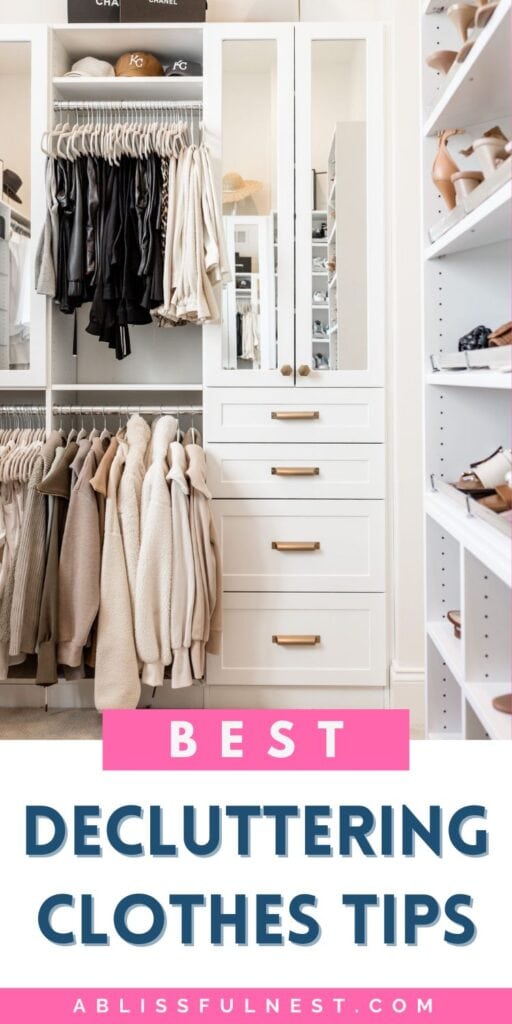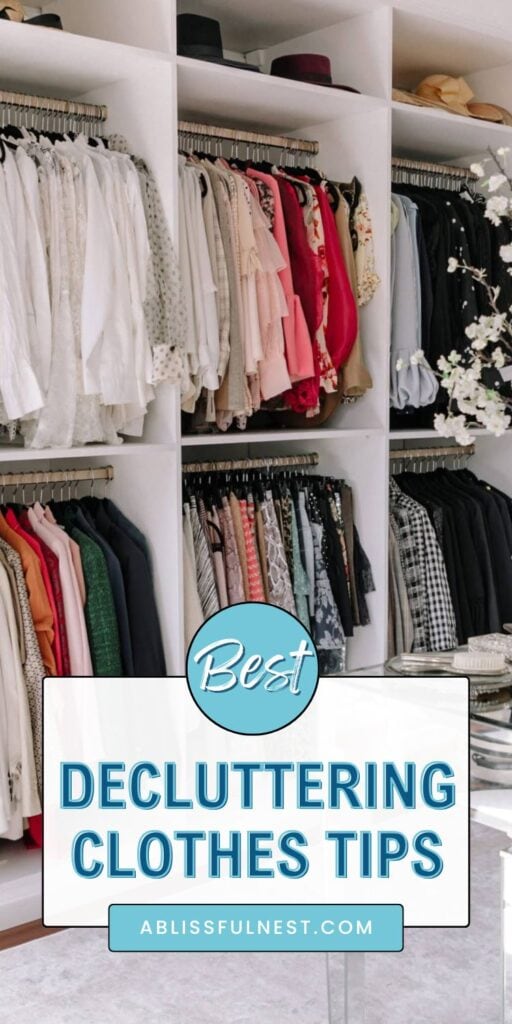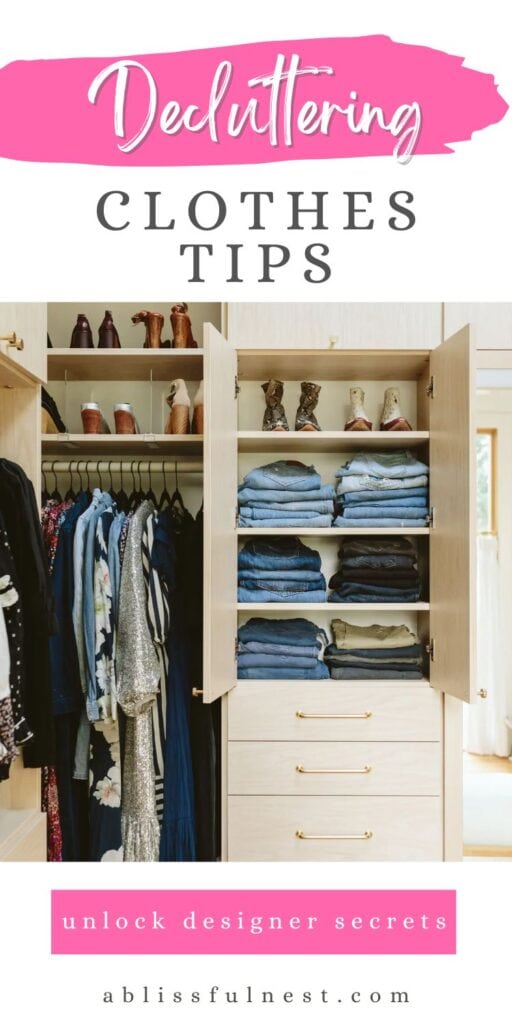Trying different decluttering clothes tips can feel overwhelming when your closet is stuffed with things you barely wear but still feel unsure about removing.
Many decluttering ideas seem simple until you’re surrounded by piles of clothing and unsure where to begin or what to keep.
It’s frustrating to dig through cluttered drawers every morning only to grab the same outfit because nothing else feels right.
Even when your closet is full, it’s common to feel like you have nothing practical or comfortable to wear.
Old clothes gather dust, shoes stack up, and tangled hangers turn your bedroom into something closer to storage than a restful space.
You might try sorting by color or season, but the clutter always creeps back when nothing is removed.
It’s hard to part with clothes that remind you of past events, old jobs, or sizes you no longer fit into.
This post may contain affiliate links. As an Amazon Associate and a participant in other affiliate programs, I earn a commission on qualifying purchases at no additional cost to you.
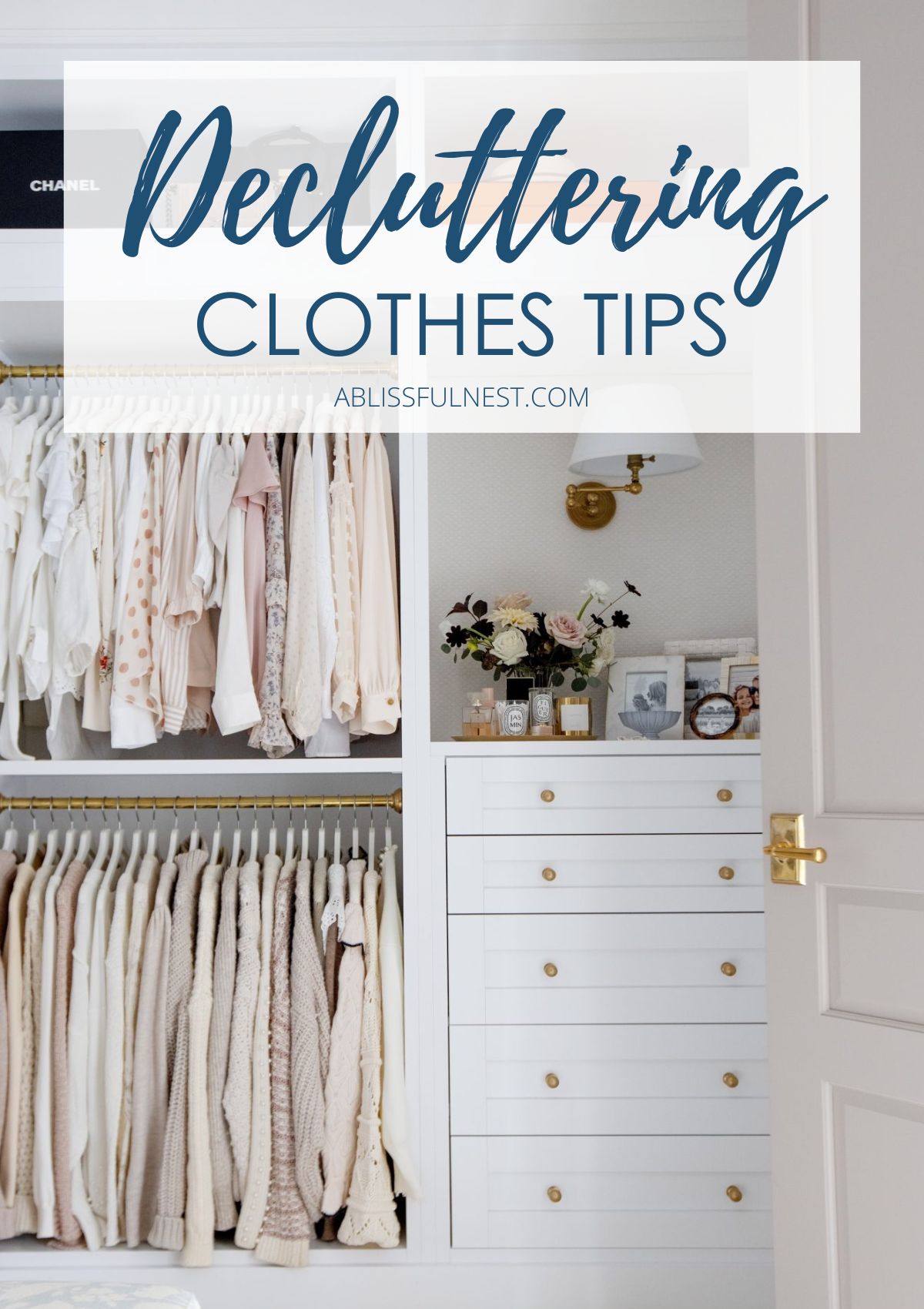
Buying new clothes feels good in the moment, but those impulse purchases quickly take over and steal space from what really matters.
Closets stay the same size, so every extra item you keep slowly takes away your comfort and mental clarity.
So, I’m going to share some realistic clothing organization ideas that will allow you to breathe, feel at ease, and be joyful every time you open your closet door.
Why Decluttering Your Wardrobe Makes a Big Difference
A messy wardrobe slows down your mornings and creates stress when all you want is a clean outfit you enjoy wearing.
Digging through hangers to find one shirt wastes time, especially when your closet is crammed with things that no longer fit or feel right.
Decluttering makes it easier to see what you own, so you stop buying the same pieces over and over again.
Removing clutter brings a calming feeling to your room and gives your closet room to breathe and stay neat longer.
With less mess, laundry feels less stressful because everything has a clear spot and doesn’t spill out onto the floor.
A clean wardrobe gives you confidence because you know each piece fits well, feels good, and matches your current style.
When clothes are easy to reach and organized, you’re more likely to wear what you love instead of forgetting it exists.
Decluttering also helps you recognize your go-to styles so future shopping becomes faster, cheaper, and more focused.
Letting go of old clothes gives you space to enjoy what’s new and feel proud of your home.
A tidy closet helps turn your bedroom into a calm place again, not just a catch-all for forgotten stuff.
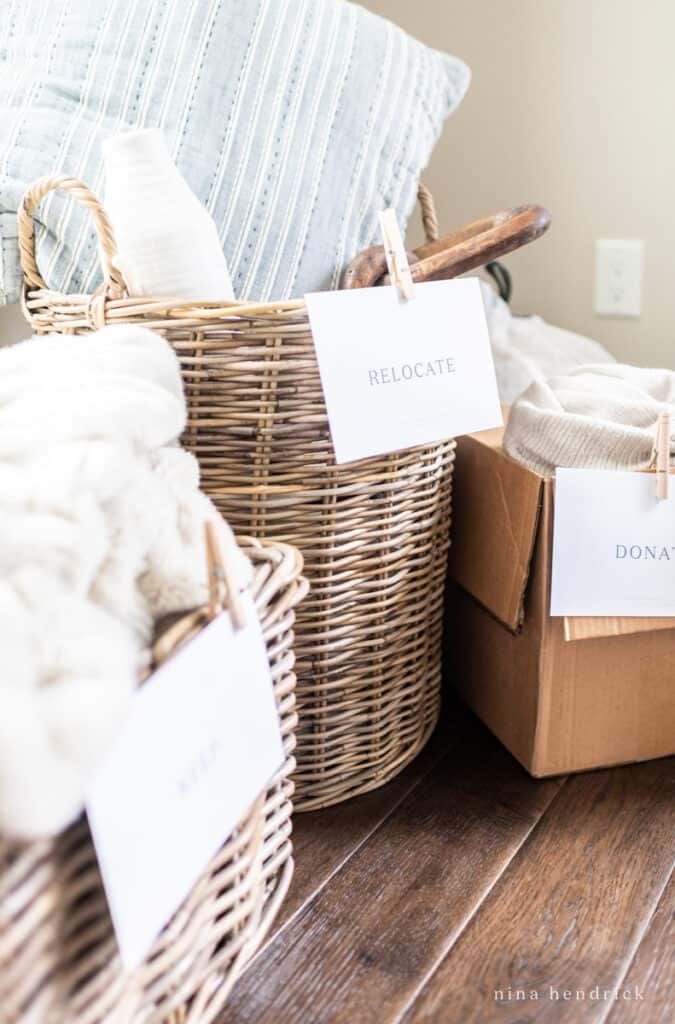
Where to Start: Clothing Declutter Basics
Set aside real, focused time to sort your clothes instead of trying to squeeze it in between errands, meals, or other housework.
Have large bins or bags ready and labeled for donation, resale, and trash so every item has a clear place right from the start.
Begin with just one group, like shirts, pants, or jackets, to avoid getting overwhelmed and scattered while going through everything at once.
Take every single item out from that category so you can see exactly what you’ve been keeping, ignoring, or forgetting about completely.
Laying everything out gives you a better sense of duplicates, worn pieces, or styles that no longer match your current lifestyle.
Clear off your bed or floor so you have a clean space to sort and so you’re more likely to finish the task.
If you’re unsure about keeping something, try it on and ask how often you actually wear it or reach for it without hesitation.
Be fully honest with yourself about how the piece fits, feels, and whether it still works with your current size and style.
Set a timer to allow short breaks, but aim to complete the task in one sitting to stay focused and avoid dragging it out.
Once you finish one section, take a short pause, then move on to the next until your entire closet has been sorted with intention.
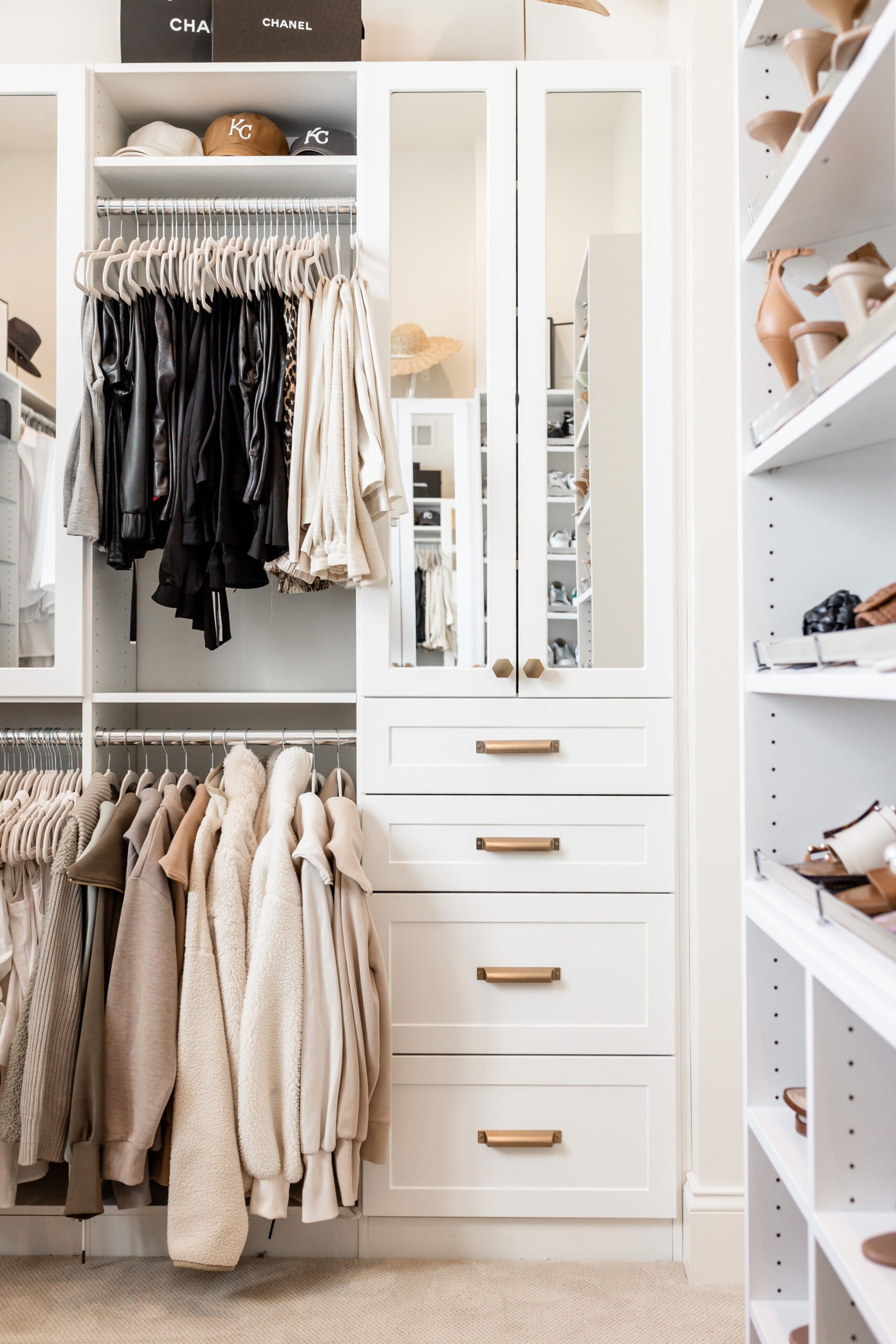
What You Need To Declutter Your Clothes
Decluttering gets easier when you have the right tools ready so you can sort, clean, and donate without constant stops or extra trips.
Here are some simple supplies to declutter your clothes faster, stay organized, and make smarter decisions while sorting your wardrobe.
Tap Photos To Shop
How to Decide What Clothes to Keep or Let Go
Start by asking when you last wore the item and whether it still fits and feels the way you need it to right now.
Would you like to save this post?
If you skip over a piece again and again, that’s a clear sign it no longer deserves a spot in your closet.
Clothes that need repair should only stay if you’re ready to fix them this week, not just storing them for later.
You can keep sentimental clothes, but limit them to one small box or bin so they don’t crowd out your everyday wardrobe.
Release clothes tied to a version of yourself that no longer fits your lifestyle, routine, or current day-to-day needs.
You don’t need five of the same item, so keep the best one and pass the extras to someone who might use them more.
Focus on clothes that suit the life you live today, not pieces from jobs, routines, or weather you no longer deal with.
Goal-size clothing can feel discouraging, so ask if it’s truly helping your progress or holding you emotionally in place.
If a piece is uncomfortable, itchy, or makes you fidget every time you wear it, it’s time to let it go.
Keep clothes that make you feel good, fit well, and are something you would confidently wear out of the house tomorrow.
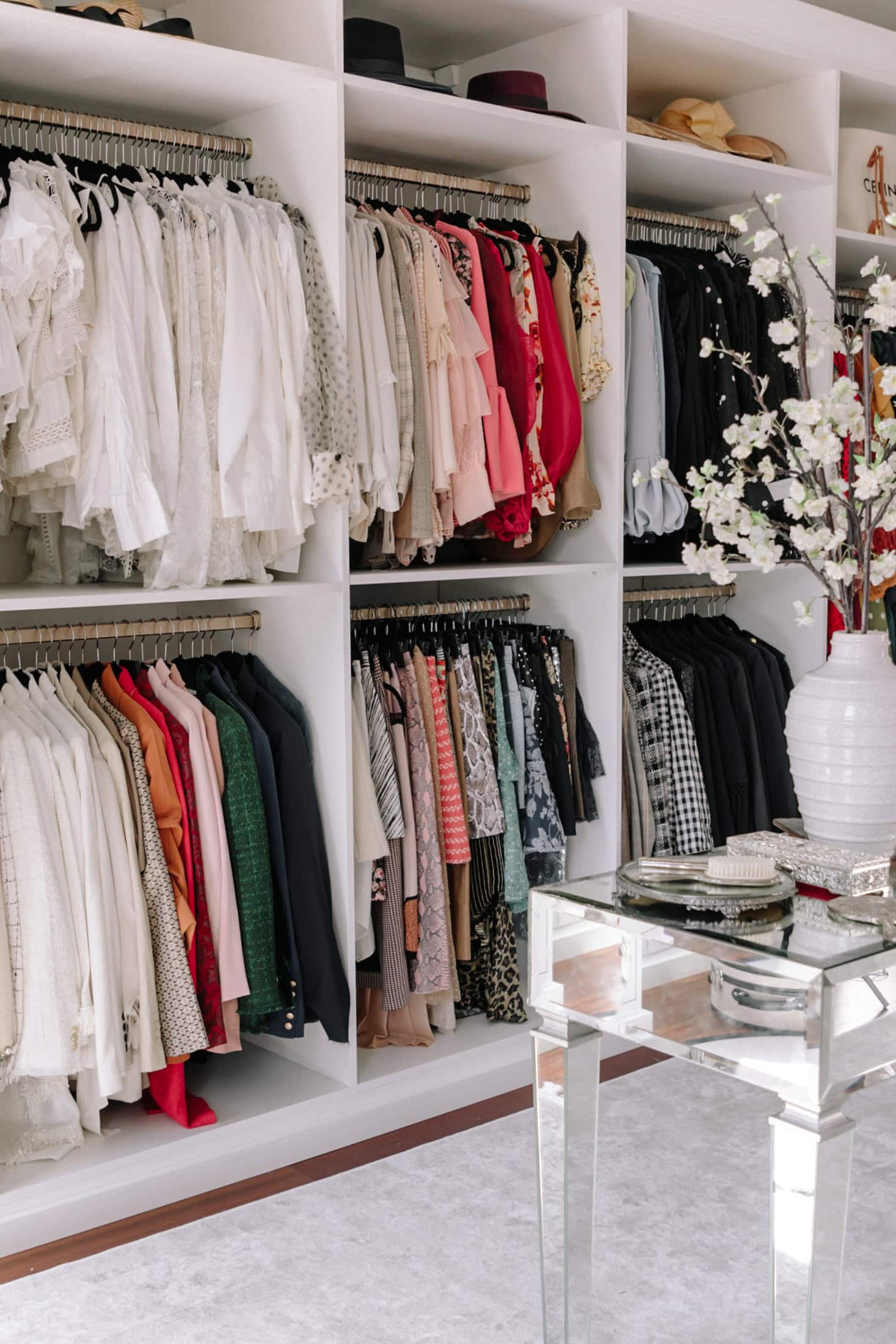
Smart Closet Decluttering Tips That Actually Work
Follow the one-in, one-out rule to avoid letting your closet fill up again every time you buy something new or trendy.
Keep off-season clothing stored in labeled bins, under-bed containers, or top shelves so your closet only holds what you currently wear.
Sort your clothes by type first, then organize by color to make it easier and faster to choose outfits each morning.
Use shelf dividers or drawer organizers to keep small items like socks, underwear, or scarves from becoming a jumbled, frustrating mess.
Hang your most-used clothes at eye level so they’re easy to grab, and move less-used items higher or lower for better space use.
Flip each hanger backward after wearing an item so you can easily track what you wear and what you always skip.
Watch for hidden clutter like unused belts, hats, or old bags stuffed into corners that slowly take up space without being noticed.
Give your closet a quick review every month so you can catch clutter early before it builds back up over time.
Only shop when you know what gaps exist in your closet instead of buying duplicates or things you already forgot you owned.
Treat your closet like valuable space and keep only the clothes that make you feel good, fit well, and serve your daily routine.
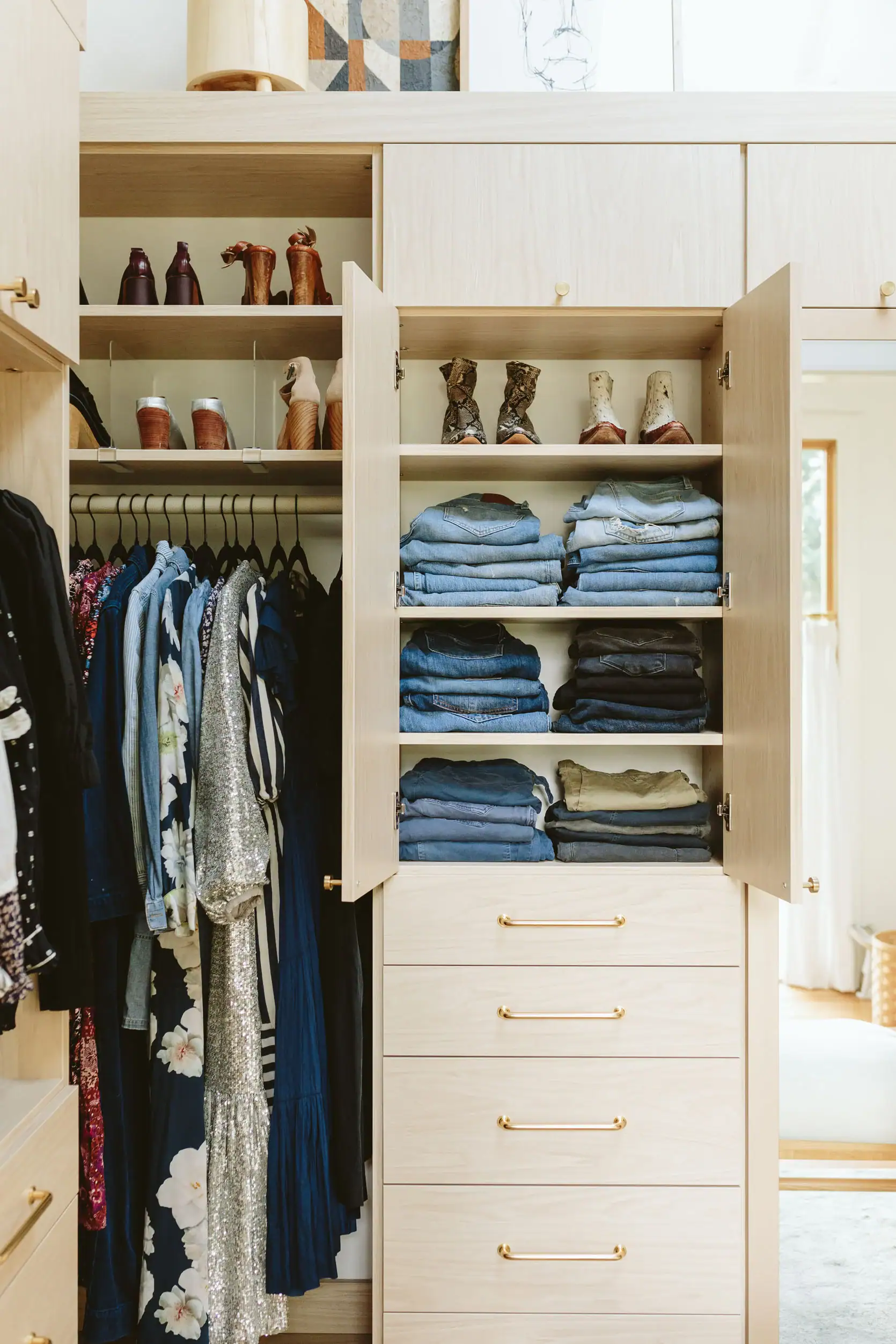
What to Do With Clothes You Don’t Keep
Donate clean clothes in good condition to local shelters, churches, or centers where they can directly support people in need within your community.
Many secondhand and resale shops accept casual clothing, shoes, and accessories if they are gently worn and still considered current in style and fit.
Sell quality used clothing on platforms like Poshmark, ThredUP, or Facebook Marketplace to recover some value from items you no longer wear.
Make sure each piece is washed, neatly folded, and well photographed to increase the chance of a successful sale online.
Recycle stained or damaged clothes through community textile recycling programs or bins designed to keep fabric waste out of landfills.
Cut worn-out shirts or old flannel into soft rags you can reuse for cleaning windows, wiping counters, or washing your car.
Plan a clothing swap with friends or neighbors so everyone can trade items they no longer want without spending any money.
Check with local schools or nonprofits, as many accept donated clothing for students, clothing closets, or seasonal community outreach programs.
Sort seasonal donations into clearly labeled bins so they’re ready to give away at the right time, like coats in fall or sandals in spring.
Giving away clothes you no longer need creates space at home and allows someone else to enjoy and benefit from what you let go.
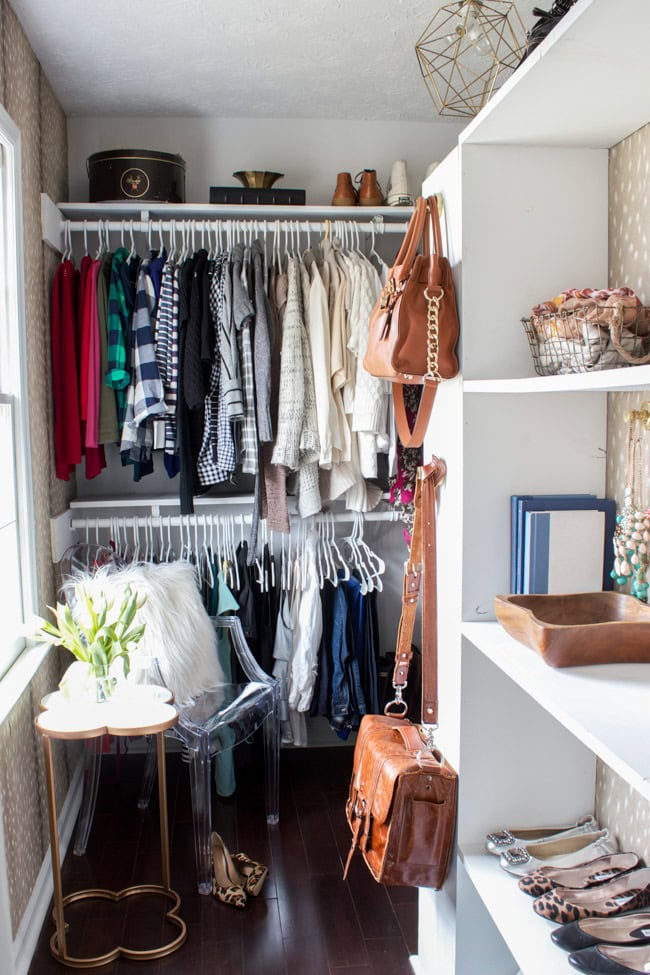
Frequently Asked Questions
Most closets take two to four hours to complete, depending on their size, the number of items you own, and your ability to make decisions quickly. You can finish faster by working in categories, staying focused, and having bins ready before you begin sorting clothes and accessories.
Group clothes by type and color so outfits are easier to find, and store off-season items in bins or higher shelves. Use slim hangers and drawer dividers to make the best use of space and keep things neat over time.
If you haven’t needed them in a year, you likely never will—don’t hold onto pieces that create guilt or take up valuable space. Keep only the items you love wearing now and let go of the rest so your closet feels light and useful again.
Follow the one-in, one-out rule and make sure every new item has a place and purpose before bringing it home. Shop with intention, not boredom, and build a wardrobe that fits your lifestyle rather than reacting to sales or trends.
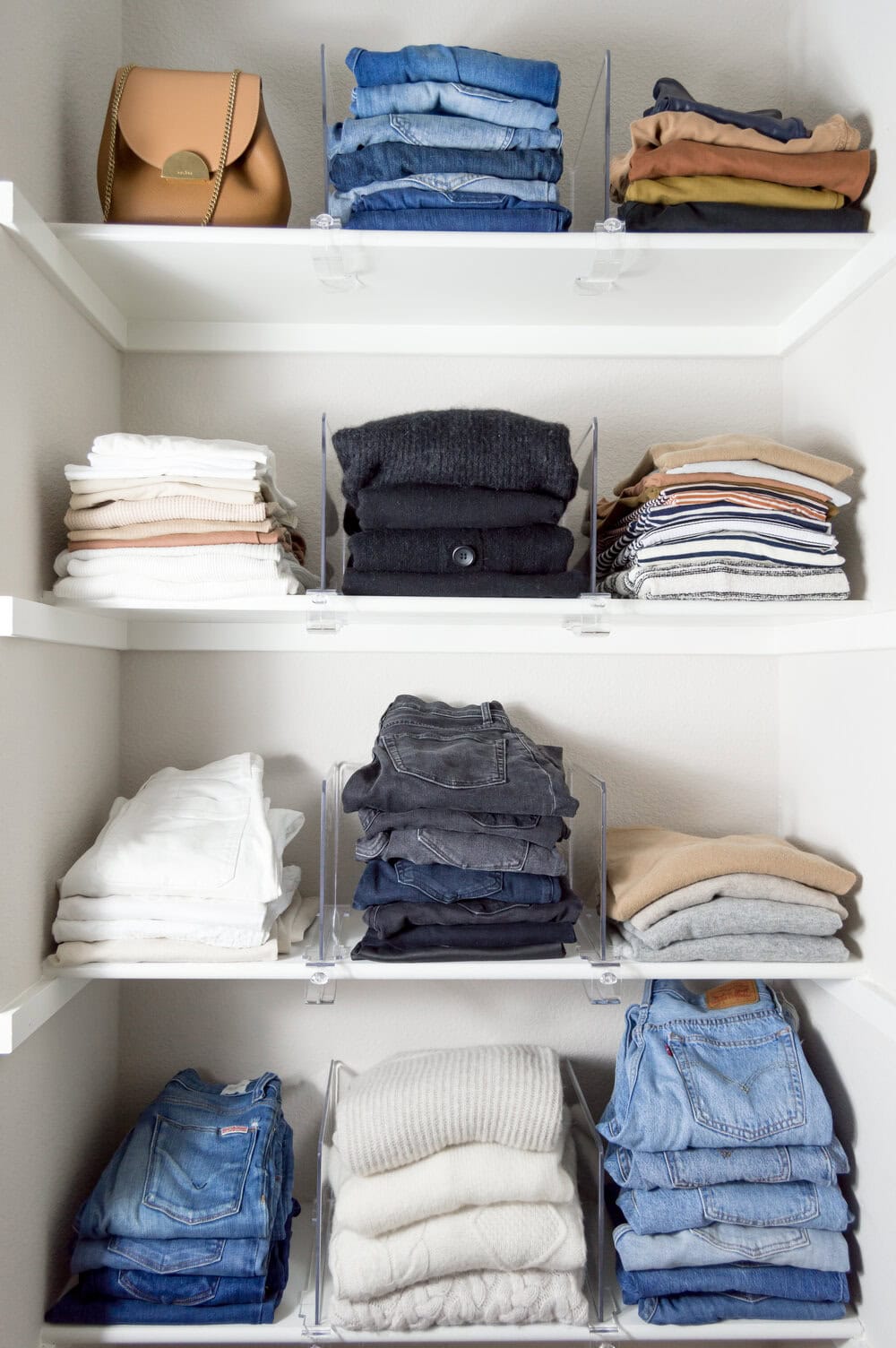
Organizing your closet doesn’t have to be stressful, especially when you follow smart wardrobe decluttering that keeps the process clear and manageable.
I hope these decluttering clothes tips help you create a cleaner, easier-to-use space that feels fresh and fits your current lifestyle.
Every small decision adds up, and clearing out what no longer works helps you enjoy what truly belongs in your life.
With the right habits, you can keep your closet from returning to chaos and enjoy a more peaceful, stylish home.
What matters most is having a space that gives you confidence, clarity, and less stress every time you get dressed.


